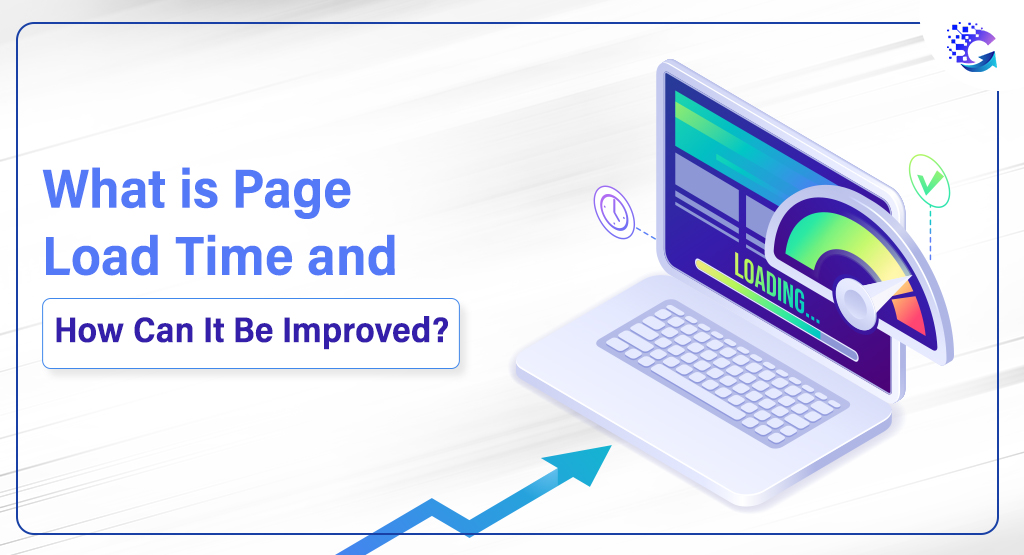Remember the last time when you opened a website to order your favorite ice cream, but after a few clicks, you were agitated as the site took plenty of time to load? These few seconds can decide whether your visitors should proceed or discard a particular site.
To survive in the cut-throat era, you need to ensure that your site loads quickly to keep audiences hooked and engaged. Here enters a digital marketing agency that will help you in maintaining page load time, irrespective of your domain and the nature of business.
Page load time is a crucial parameter for businesses that want to outshine their competitors in every aspect. The speed at which your business website loads can drastically influence customer experience, search engine rankings, and, ultimately, your sales and growth.
This is the right time to analyze what page load time really implies and unravel several strategies to improve it.
What is Page Load Time?
In simple words, the page load time indicates the amount of time it requires for a web page to fully open its content in front of users. A user requests this by clicking a link or typing a URL.
However, you need a deeper evaluation to maintain the speed. Let’s take a look at different types of page load times.
- Time to First Byte (TTFB): This indicates how long it takes for a browser to receive the first byte of data from the server.
- First Contentful Paint (FCP): This implies how much time is required for the first visible element (text, image, etc.) to appear in front of users.
- Fully Loaded Time: This measures when all pages (images, scripts, etc.) of your website have been loaded fully.
It can be concluded that the page load time is not a single number; it’s a set of performance metrics that decide how quickly your site responds and loads. If your site’s page load time is slow, consult with an eminent digital marketing agency to improve its time.
Why does this matter?
Akamai research indicates that more than 40% of customers leave a website if it takes more than 3 secs to open. It also indicates that a 1-second delay in page response may result in businesses losing 7% in conversions. You may lose many potential customers due to sluggish loading.
Why is Page Load Time Important?
Here are a few reasons why page load time deserves your full attention:
- User Experience:
People expect instant access to information. A slow website frustrates users and increases bounce rates.
- SEO Rankings:
Google has officially stated that page speed is a ranking factor. Faster sites get better visibility on search engines.
Recommended reading: The Role of Semantic Search in Modern SEO Strategies
- Conversions and Revenue:
As mentioned earlier, even minor delays can impact sales, signups, and other key conversion metrics.
- Mobile Users:
Mobile traffic dominates the web. Mobile users are even less tolerant of slow sites because of varied internet speeds.
- Brand Reputation:
A fast website builds trust. A slow one suggests outdated practices and poor service, even if your product is top-notch.
Only a reputed SEO company in Punjab will help you implement the right processes to escalate your website’s page load time.
How to Improve Page Load Time: Actionable Strategies
Now, you have adequate knowledge of website speed. Let’s discuss how to improve your site’s speed for optimum online visibility.
1. Optimize Images
Images are often the largest assets on a page. If they are too heavy, they slow down load times dramatically.
How to overcome this challenge
- Compress images without losing quality using tools like TinyPNG or ImageOptim.
- Use modern formats like WebP, which provide better compression than traditional JPEG or PNG.
- Lazy-load images, meaning they only load when they are needed (as users scroll down).
2. Minimize HTTP Requests
Every element on your webpage — images, stylesheets, scripts — makes an HTTP request. The more requests, the slower your site.
How to solve this issue:
- Combine CSS and JavaScript files where possible.
- Use CSS sprites to combine multiple images into one.
3. Enable Browser Caching
When you navigate a website, some elements get stored in its browser. So, the website doesn’t require you to reload everything when you visit the next.
How to overcome this issue:
- You need to set up caching rules through your server. You can even opt for plugins like W3 Total Cache.
Partnering with the best SEO company Punjab will help you to alleviate these challenges by opting for the right strategies.
4. Use a Content Delivery Network (CDN)
A CDN is a network of servers located around the world. This type of server delivers your website’s content from the nearest server to the customer.
How to address it:
- Services like Cloudflare, AWS CloudFront, or Akamai can significantly boost load times by reducing latency.
5. Remove unnecessary elements from CSS, JavaScript, and HTML
If required, you can omit spaces, comments, and characters from code files. These minimize the loading time and make your website faster.
How to fix it:
- You can opt for tools like UglifyJS (for JavaScript) or CSSNano (for CSS) for the best results.
6. Optimize Your Server and Hosting
Your server’s speed plays a major role in page load times.
How to solve this problem:
- Choose high-performance hosting providers.
- Consider dedicated hosting or VPS if shared hosting is slowing you down.
7. Prioritize Above-the-Fold Content
Make sure the first visible part of your website (what the user sees immediately) loads as fast as possible.
How to overcome this problem:
- Defer loading of non-critical JavaScript.
- Inline critical CSS is directly added to the HTML for faster rendering.
8. Reduce Redirects
Redirects create additional HTTP requests and increase load time.
How to address it:
- Audit your site and minimize unnecessary redirects.
Recommended reading: How to Improve Local SEO for your Business
9. Enable Gzip Compression
By compressing your website’s files, Gzip makes them smaller and faster to load.
How to deal with this issue:
- Enable Gzip through your server settings or use a plugin if you are using CMS platforms like WordPress.
10. Monitor and Regularly Test Website Speed
Optimization is an ongoing process. Use tools to measure performance regularly.
Tools to try:
- Google PageSpeed Insights
- GTmetrix
- Pingdom
- WebPageTest
With the help of these tools, you will not only get load time statistics for your website but also obtain fruitful tips to mitigate these slowdowns.
Get in touch with the best IT company in Punjab that will guide you in optimizing your page’s speed.
Conclusion:
To survive in this digital-driven society, page load time not only offers technical details of your site but also is an integral part of your brand experience. If your website loads quickly, you will get more online visitors. This will automatically boost your ranking in SERPs, generate more conversions and give a strong impression on users.






